But it doesn’t have to be.
What Is Contact Center Management?
Contact center management is a critical function in maintaining:
- Positive brand reputation
- Customer retention
- Success in a customer-centric space
Call centers vs. contact centers: What’s the difference?
Both call centers and contact centers support voice calls, provide detailed analytics, and offer cloud-based solutions for flexibility and growth. While the terms are often used interchangeably, there are subtle distinctions:
- Call centers typically handle phone calls.
- Contact centers support multiple channels, such as voice, SMS, email, live chat, and social media.
Contact centers provide a seamless omnichannel experience, ensuring customers can reach support through their preferred channels. They integrate advanced automation and CRM tools for better efficiency and personalization. Unlike call centers, they are more scalable, allowing businesses to adapt to evolving customer needs.

Roles and Responsibilities of Contact Center Management
1. People management
Building and leading a strong team is essential for smooth operations. Managers must:
- Recruit, hire, and train call center agents to handle customer interactions effectively.
- Create a positive work environment to boost morale and reduce turnover.
- Manage workforce scheduling to ensure adequate staffing during peak hours.
- Conduct regular team meetings, coaching, and performance reviews to keep agents engaged.
- Ensure clear communication of company objectives, service expectations, and compliance rules.
💡When agents feel supported, they perform better — leading to happier customers.
2. Process management
Efficient processes create smooth customer interactions. The best way to achieve that is to create a roadmap for smooth customer journeys. Managers should:
- Design workflows that prioritize higher customer satisfaction and efficiency.
- Monitor KPIs and analyze data to identify areas for improvement.
- Ensure compliance with industry regulations and service standards.
- Continuously refine and optimize processes for better service delivery.
- Setting goals and aligning strategies with company objectives.
💡A well-structured operation ensures both productivity and a great customer experience.
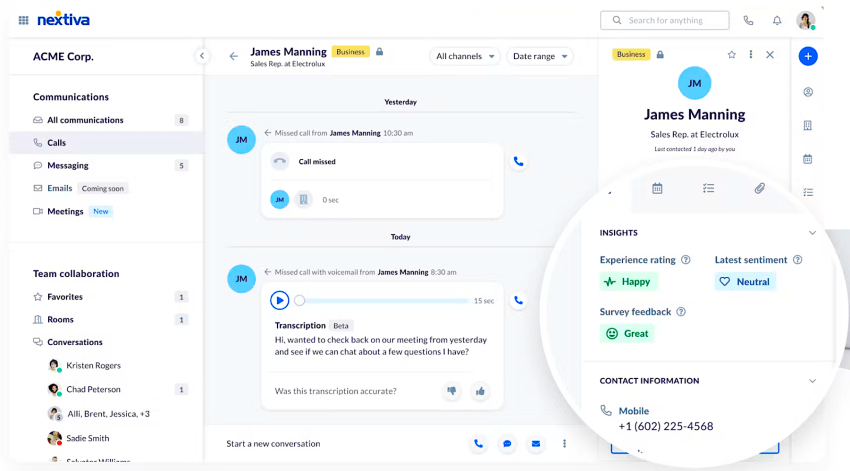
Related: How to Overcome These 15 Contact Center Problems
3. Technology management
Call center technology is your toolbox for a seamless operation. It offers customers omnichannel support and the flexibility to connect on their preferred channel, be it via phone, email, SMS, or social media. Call center managers oversee:
- Customer service software and call routing systems to streamline operations.
- AI tools, chatbots, knowledge bases, and self-service options to enhance efficiency.
- Omnichannel support (phone, email, SMS, social media) for a seamless customer experience.
- Reporting and analytics tools to track performance and drive improvements.
Evaluating contact centers? Get the buyer’s guide.
This guide reveals the five pillars of a modern platform, key questions to ask, and red flags to avoid.
What Makes a Good Contact Center Manager?
Hiring a good call center manager isn’t easy. The best candidates balance hard and soft skills. They excel at monitoring customer behavior and help enhance employee performance. Here are a few examples of what helps a contact center manager excel in this role.
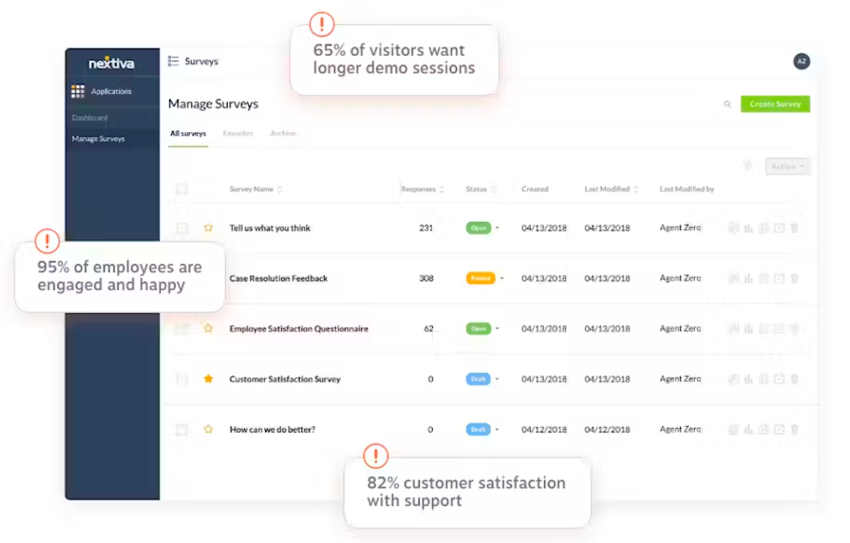
Hard skills: Technical and strategic abilities
Strong contact center managers rely on data, strategy, and clear communication to optimize operations and drive long-term success.
- Strategic vision: Great managers anticipate challenges, analyze trends, and implement proactive solutions to improve processes and technology. This skill is cultivated by staying informed about industry trends, analyzing customer feedback and call center key performance indicators (KPIs), setting clear long-term goals aligned with the company’s strategy, and being open to exploring major contact center innovations with the team.
- Accountability and problem-solving: A strong manager takes ownership of issues, learns from setbacks, and implements changes to prevent similar problems in the future. This helps create a culture of accountability where agents feel supported and comfortable reporting errors so they can learn from them.
- Communication expertise: Clear communication is paramount for a successful contact center manager. They effectively convey expectations and goals to their team, providing constructive feedback that helps agents improve their performance. They actively listen to concerns and foster open communication within the team.

Soft skills: Interpersonal and leadership qualities
Beyond technical expertise, top managers possess strong leadership and adaptability to support customers and agents.
Composure under pressure: Staying calm during challenges directly reduces stress levels for the team. When faced with angry customers, tight deadlines, or technical glitches, a calm manager can assess the situation rationally, make sound decisions, and de-escalate tense situations.
Leadership: Effective leadership motivates and inspires the team. A good contact center manager possesses emotional intelligence, clearly communicates expectations, empowers agents to make decisions, and celebrates achievements. This creates a collaborative work environment where agents feel valued and supported.
Best Practices for Successfully Managing Your Contact Center
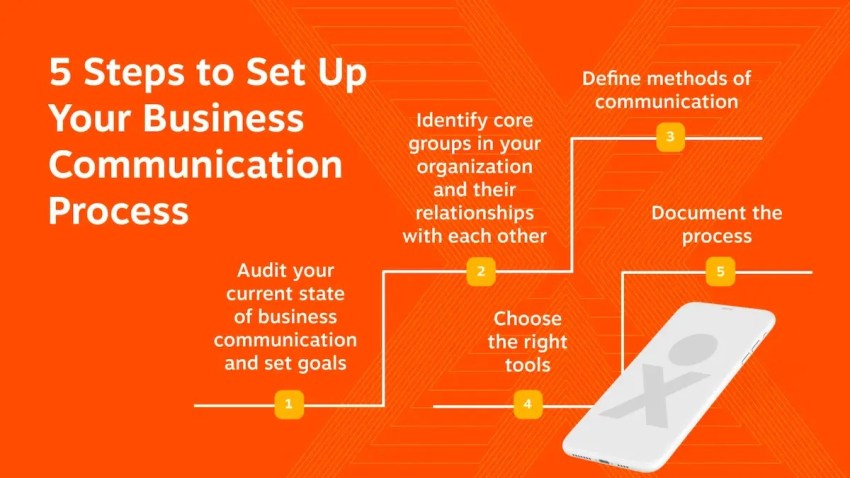
1. Assess your current call center operations
Start by analyzing your call center operations’ strengths and weaknesses. Listen to call recordings, shadow agents, and review performance reports. Gather feedback from agents, supervisors, and customers to understand their experiences. This comprehensive assessment will provide the foundation for your strategy.
| Pro tip: Build a high-performing team Hire for key skills like communication and problem-solving. Provide structured onboarding and ongoing training to keep agents sharp and adaptable. |
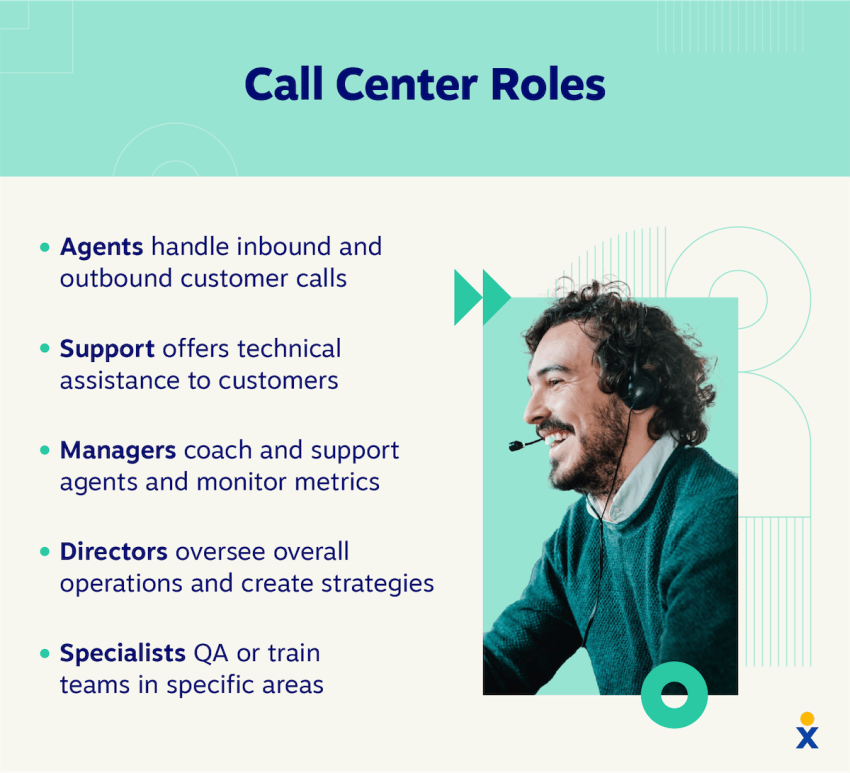
Related: Contact Center Industry: Hype vs. Reality (and What’s Next)
2. Develop your contact center roadmap
Based on your findings, craft a roadmap for your contact center. This plan should be your guiding light, outlining a clear vision for improvement and prioritizing specific areas based on the data you collected.
Ensure your plan aligns with your company’s goals. It should be a seamless extension of the bigger picture. For example, if the company is launching a new product line, your roadmap might prioritize agent training on that product.
Also, create an organizational structure to outline clear reporting lines and responsibilities for different roles in your contact center to streamline workflows and avoid miscommunication.
| Pro tip: Set clear goals Use the S.M.A.R.T. method to set clear, measurable goals. Break down company-wide targets into individual agent objectives and hold regular meetings to ensure alignment. |
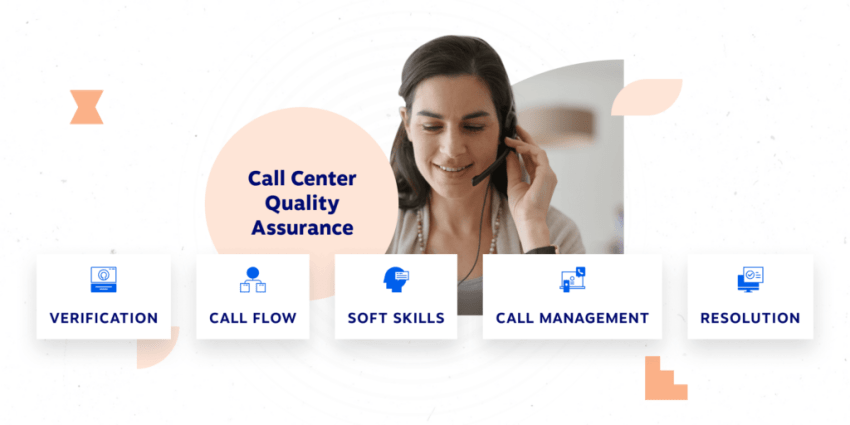
3. Invest in the right contact center management systems
Technology is no longer an afterthought in the contact center — it’s the engine that drives efficiency and innovation. You need the right call center management systems to communicate with your customers. Here are a few you should look for:
- Cloud contact center software: Invest in a cloud-based contact center software that can tackle both inbound and outbound calls and offer advanced features like call recording, quality assurance, real-time coaching for agents, and robust analytics dashboards for actionable customer insights.
- CRM integration: Choose contact center software that integrates with your CRM system to streamline workflows and provide agents with a complete view of each customer’s history and preferences.
- Artificial intelligence (AI): Many contact center software solutions come equipped with AI. Chatbots can handle simple inquiries, freeing up agents for more complex interactions. Sentiment analysis tools help you understand customer emotions during calls and identify areas where agents can improve their communication style.
- Omnichannel support: Customers expect seamless support across multiple channels, not just phone calls. Your omnichannel contact center software should offer channels like email, chat, messaging, and social media to provide a unified customer experience.
| Pro tip: Prioritize scalability Choose contact center software that can grow with your business. Look for flexible pricing, integration capabilities, and AI-powered automation to ensure your system adapts to future needs without costly overhauls. |
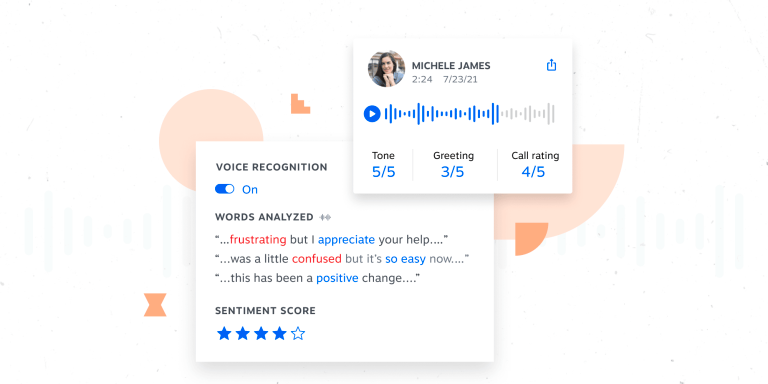
Where does your CX strategy stand with AI?
Take the AI Maturity assessment to get personalized recommendations on how to enhance your CX.
4. Make data-driven decisions
Use your contact center software to generate reports on key contact center metrics to track your call center performance. Here are some key agent performance metrics to monitor:
- Call volume: This tracks the number of calls received, helping with staffing and resource allocation.
- Average handle time (AHT): This measures the average time spent resolving a caller’s inquiry. Lower AHT indicates efficient call handling.
- Call abandonment rate: This tracks the percentage of calls in which customers hang up before reaching an agent. A high abandonment rate indicates frustration and potential for improvement.
- Agent productivity: This tracks the number of customer calls handled and issues resolved by agents per unit time.
Include analyzing customer data from digital channels like SMS, email, and live chat to provide a complete view of customer interactions. Use these insights to identify trends, optimize staffing levels to meet call volume, and understand customer sentiment.
This data helps to resolve customer issues for effectively. It also allows you to pinpoint specific issues, like if they are frustrated with long wait times or confused by a specific product feature.
| Pro tip: Monitor performance Track real-time metrics like call volume, handle time, and CSAT. Use call center analytics to spot trends, address weaknesses, and optimize team performance. |
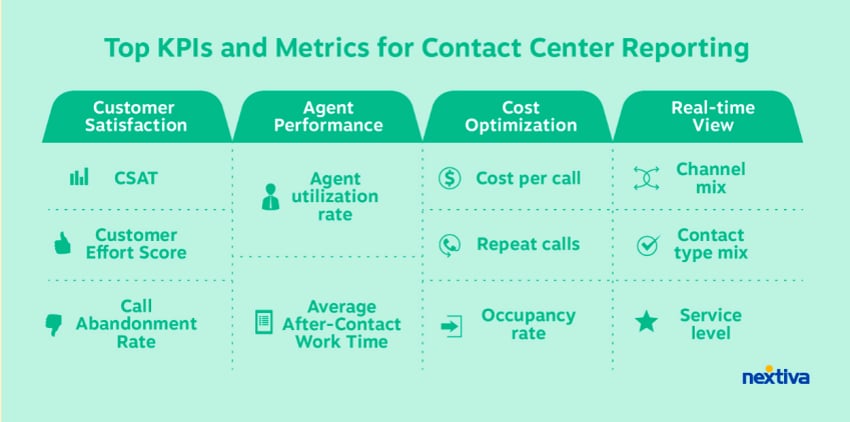
5. Prioritize customer experience
Put the customer at the forefront and focus on metrics that directly impact customer experience and your business goals. This might include customer satisfaction metrics like:
- First call resolution (FCR): Measures the percentage of calls resolved during the first contact. A high FCR signifies efficient problem-solving.
- Net Promoter Score (NPS): A measure of customer loyalty that impacts your bottom line.
- Customer Satisfaction (CSAT): Gauges customer sentiment toward the contact center experience. You can use surveys and feedback forms to measure CSAT.
Transparency is important. Share these metrics with your team and encourage them to experiment with new strategies to improve the customer journey. For example, you could pilot a new script for handling common customer complaints or introduce a post-call survey to gather specific feedback on agent interactions.
| Pro tip: Ensure smooth operations Use smart call routing to connect customers with the right agents. Provide call scripts, a knowledge base, and contingency plans for peak periods. |
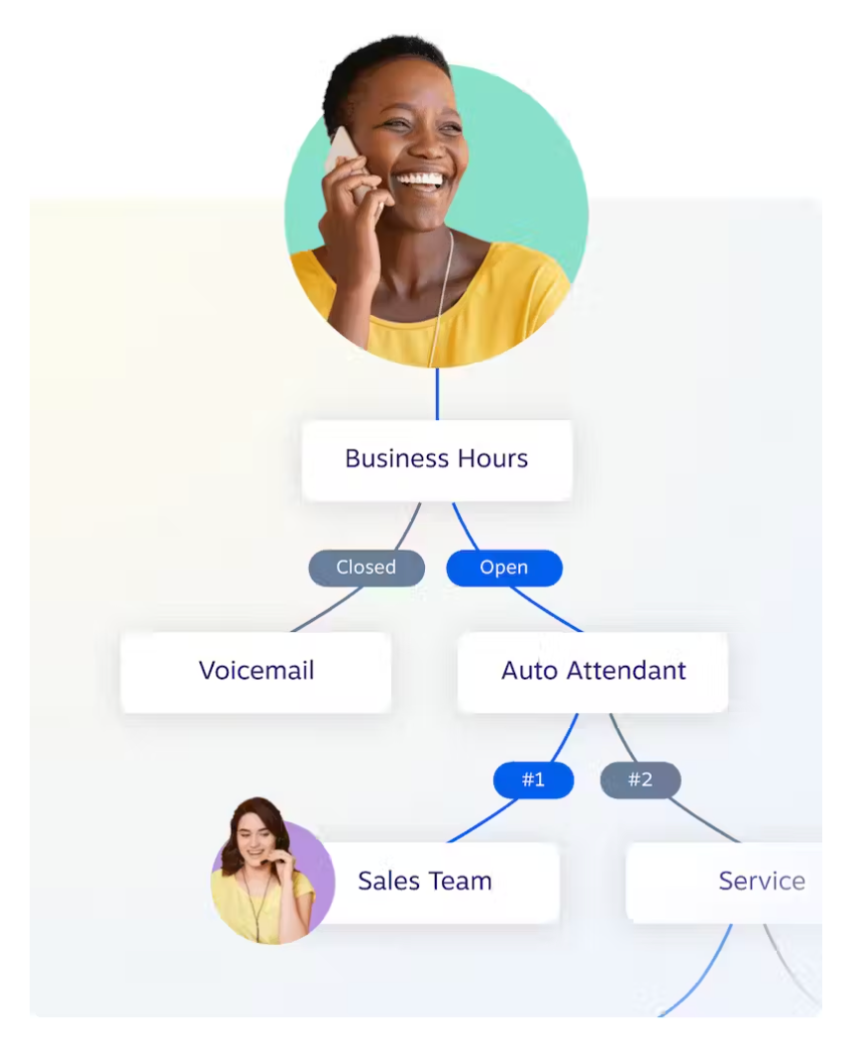
6. Optimize processes and workflows
Your contact center needs ongoing refinement. Regularly assess agent performance alongside operational metrics to identify areas for improvement. Optimize staffing levels and agent skill matching to reduce inefficiencies. Implement automation where possible, such as Interactive Voice Response (IVR) systems and AI-powered chatbots, to handle routine inquiries and free up agents for complex interactions.
| Pro tip: Plan your budget Allocate resources wisely across staffing, tech, and training. Review expenses regularly and explore cost-saving strategies to stay efficient. |
Related: Contact Center Pricing: Making Sense of Platform & Operating Costs
7. Focus on employee engagement and growth
Your agents are the lifeblood of your call center. Create an empowering and supportive culture with clear expectations and ongoing feedback. Invest in your team’s growth through quality training, incentives, and team-building activities.
- Provide regular training on new products, services, and soft skills.
- Offer incentives and recognition programs to reward top performers.
- Organize team-building activities to create a positive work environment.
| Pro tip: Invest in employee experience Recognize top performers with incentives. Foster teamwork through healthy competition and create a positive, growth-focused work environment. |

8. Continuously improve
A thriving contact center is never truly “finished.” Gather feedback from customers and agents through surveys and open discussions. Monitor your analytics dashboards to identify any performance dips. For example, a sudden increase in call abandonment rates, and course-correct as needed.
Work with other departments, such as marketing or sales, to ensure your efforts align with the company’s goals. Also, experiment with new ideas, such as implementing new technology, offering additional support channels like social media support, or testing new call routing strategies.
Call center leaders should also take the time to attend relevant conferences or workshops to learn from others and discover new strategies to optimize their operations. Encourage your agents to participate in industry certifications or training programs to further develop their skill sets.
Amber Dixon, the CEO of Elderly Guides, who operates a large contact center, says it’s hard to balance continuous improvement and day-to-day management:
| Pro tip: Communicate effectively Hold daily huddles for updates, weekly one-on-ones for coaching, and quarterly reviews for growth. Encourage open communication and active feedback. |
Bonus Tips To Elevate Your Contact Center
Building on the strong foundation, here are some additional tips for effective contact center management:
✅ Set clear goals: Use SMART goals and individual targets to guide your team’s performance and align their efforts with company objectives.
📊 Monitor your performance: Track real-time metrics and use data-driven insights to identify improvement areas and optimize operations.
☎️ Effectively communicate: Foster a collaborative environment with structured team meetings, one-on-ones, and open feedback loops.
💰Plan your budget: Create and maintain a strategic budget to allocate resources effectively and support ongoing team needs.
📈 Recruit and develop a high-performing team: Hire the right talent and invest in continuous training to keep your team skilled and adaptable.
📗 Invest in employee experience: Recognize achievements, encourage healthy competition, and build a positive work culture to keep your team engaged.
🎛 Ensure smooth operation: Implement smart call routing, clear scripts, and a strong knowledge base to deliver efficient, personalized customer support.

Call Center Management Made Smarter
Successful call center management is the cornerstone of building positive customer relationships. You need the right tools to make managing inbound call center operations easier and more effective, empowering your agents and improving experiences for your customers.
That’s where Nextiva’s smart contact center solution comes in. We offer omnichannel support, built-in workforce optimization tools, and AI-powered reporting and features to provide valuable insights into your contact center.
Nextiva helps you create happy customers and ditch the headaches by focusing on long-term growth.
Related: Contact Center Architecture: How Contact Centers Work
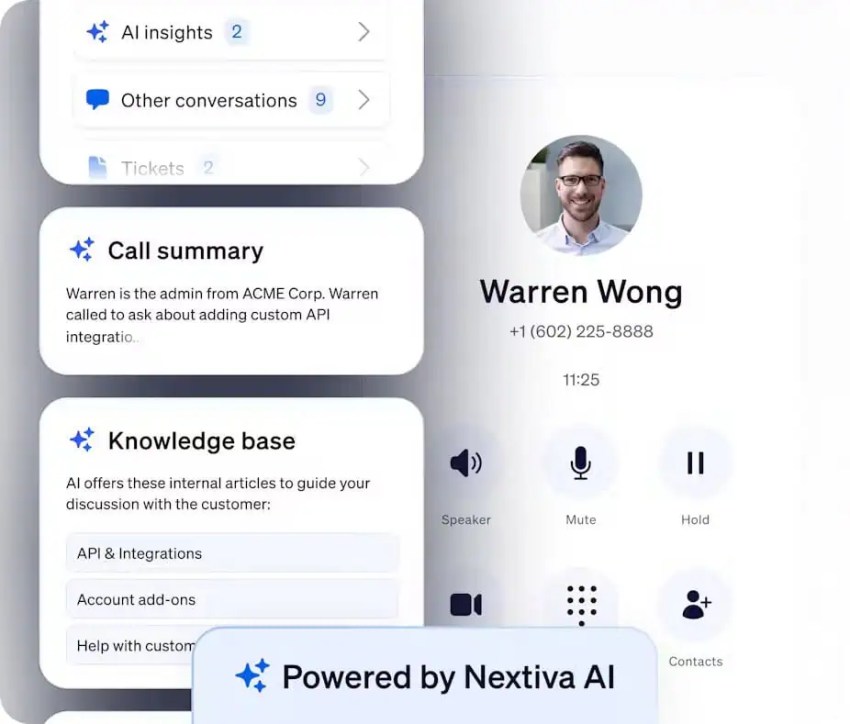
Related: Contact Center Architecture: How Contact Centers Work
Net Promoter, Net Promoter Score, and NPS are trademarks of NICE Satmetrix, Inc., Bain & Company, Inc., and Fred Reichheld.

















 Customer Experience
Customer Experience 













